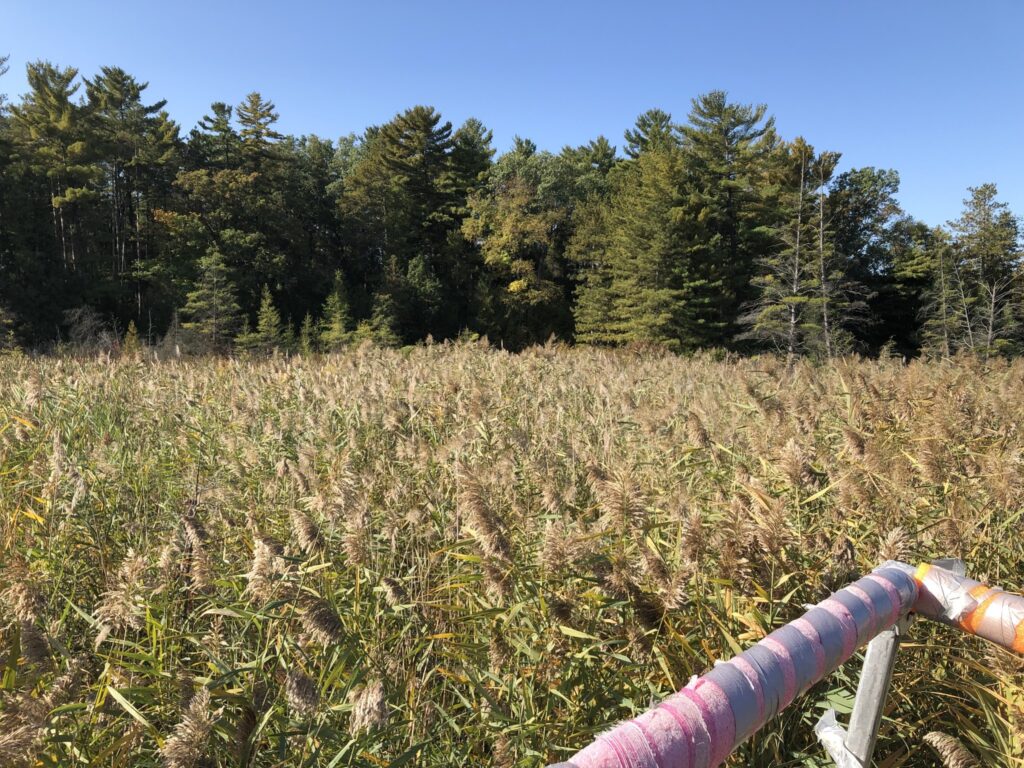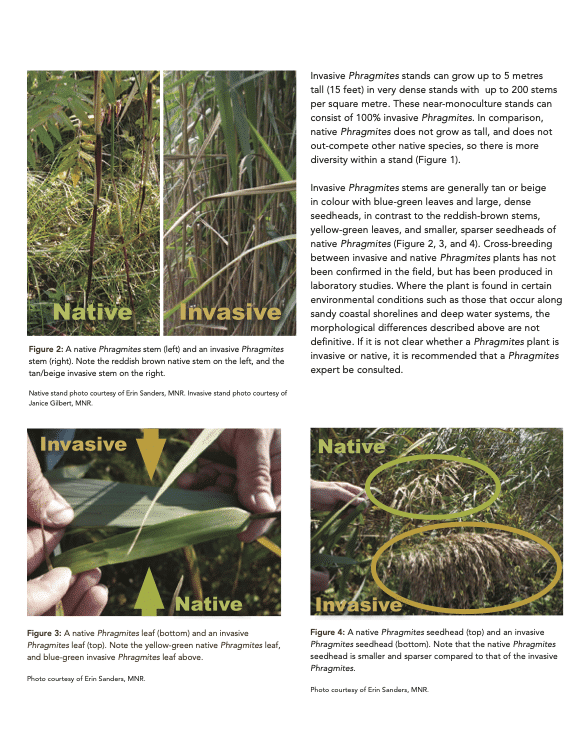Invasive Phragmites creates tall, dense stands of grass which degrade coastal areas and wetlands by crowding out native plants and animals, blocking shoreline views, reducing access for swimming, fishing and hunting and, in addition, can create fire hazards from the build-up of dry plant material. Phragmites typically grows on coastal beaches and wetlands, roadside ditches and other low, wet areas, although occasionally it has been found to grow in dry areas.
Phragmites typically colonizes a new area from seeds or small fragments of rhizomes (underground stems), dispersed by water, animals, machinery and humans. Once established, new stems grow from the underground rhizomes and the plant begins to spread. During the growing season, rhizomes spread horizontally in all directions and, when fragmented, readily develop into new plants.
Seeds – as well as rhizomes broken by natural actions such as waves, or human actions such as dredging, tilling or operating motorized vehicles along beaches – quickly spread and take root in new locations.
Rapid expansion is promoted by disturbances that give this invasive plant a competitive edge, including soil disturbance and the clearing of vegetation.
How to identify phragmites?
Although it grows mostly in wetlands, it can also be found growing in roadside ditches and on beaches and dunes. It can be hard to distinguish from its native counterpart, as they share similar features and habitat.
Invasive phragmites:
- grows in stands that can be extremely dense with as many as 200 stems per square metre.
- is so dense that it crowds out other species.
- can reach heights of up to 6 metres (18 feet).
- is very common in roadside ditches.
- has tan or beige stems, blue-green leaves and large, dense seedheads.
Native phragmites:
- grows in stands that are usually not as dense as the invasive plant; unlikely to be found in roadside ditches.
- its well-established stands are frequently mixed with other plant species.
- usually has more reddish-brown stems, yellow-green leaves and smaller, sparser seedheads.
Ontario Ministry of Natural Resources,
Invasive Phragmites – Best Management Practices, Ontario Ministry of Natural
Resources, Peterborough, Ontario. Version 2011. 15p

Find more information about the negative effects of Phragmites

